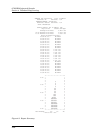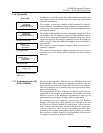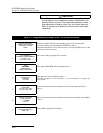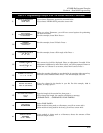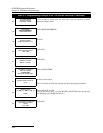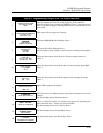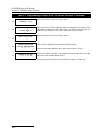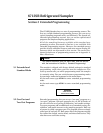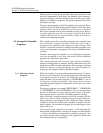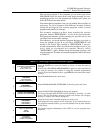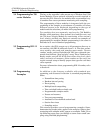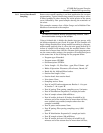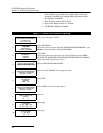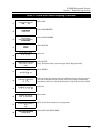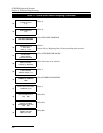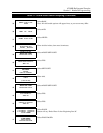
6712SR Refrigerated Sampler
Section 5 Extended Programming
5-2
Each part has its own group of bottles. Because settings for each
part are independent of each other, the sampler, when running a
two-part program, fills each bottle group as if they were being
filled by two different programs. Two-part programs finish when
both parts are done.
Two-part programming is ideal for sampling storm events. Many
storm-water run-off monitoring permits require a first-flush grab
sample within the first 30 minutes of the storm event and
flow-paced samples during the remainder of the event. With a
two-part program, you can set up part ‘A’ for the first-flush
sample and part ‘B’ for the remainder. Table 5-2 shows a
storm-water sampling program.
5.3 Storage for Extended
Programs
The sampler stores five sampling programs: one standard and
four extended. Program storage eliminates the need to
reprogram the sampler with frequently used settings. This
feature is especially useful for complex extended programs such
as two-part programs or programs with many nonuniform-time
settings.
Teledyne Isco ships the sampler to you with factory programs
that you can modify to suit your own needs. All four extended
programs are identical to each other.
The stored programs will also save your 700 Series Module
program settings and any sampler enable conditions using rain
gauge data or SDI-12 sonde parameters. These program settings
remain as long as you do not change the type of module, or
change the rain gauge or SDI-12 Hardware Setup.
5.3.1 Selecting a Stored
Program
When the sampler is in extended programming mode, it always
has one current and three noncurrent programs, each occupying
a permanent location in memory. The first time you access the
extended mode, the current program is “EXTENDED 1,” one of
the factory extended programs. The name of the current
extended program appears in quotations on the first line of the
main menu.
The factory programs are named “EXTENDED 1,” “EXTENDED
2,” “EXTENDED 3,” and “EXTENDED 4." You can rename them
with more descriptive names, making them easier to identify.
The program name is one of the extended program’s settings.
After selecting a stored program, review the settings with the
quick view screens. Each sampling program stores all the set-
tings required by the sampler to run a program. These settings
include the bottle-kit information (number of bottles and the
bottle volume), the suction-line length, the site description, start
times, and so on.
If you use the same program at two sites — each requiring dif-
ferent bottle configurations, suction line lengths, or other details
— always check these settings before running a program. You
may need to make minor changes to the program to make sure
the settings match your equipment.



